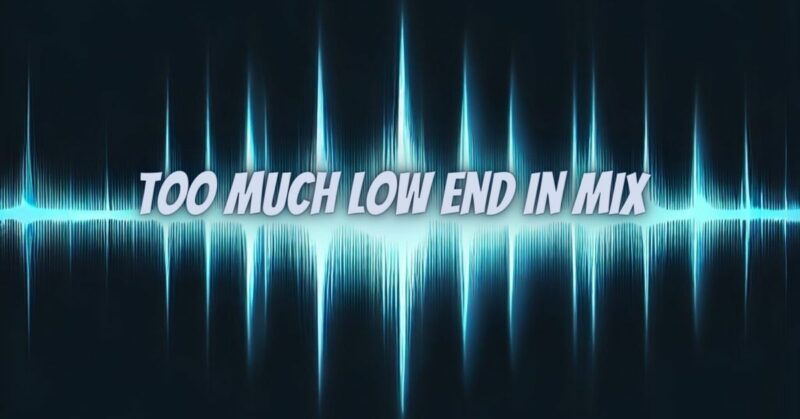Having too much low end in a mix can be a common problem for beginners and experienced engineers alike. It can make the mix sound muddy, boomy, and unclear. There are a few things you can do to identify and fix this problem.
How to identify too much low end
There are a few ways to identify too much low end in a mix:
- Listen on different speakers: Low end frequencies can be difficult to hear on small speakers, so it’s important to listen to your mix on a variety of speakers, including headphones and subwoofers. If the mix sounds muddy or boomy on larger speakers, it’s likely that you have too much low end.
- Use a spectrum analyzer: A spectrum analyzer is a tool that can show you the frequency content of your mix. If you see a lot of energy in the low end frequencies (below 200Hz), it’s likely that you have too much low end.
- Reference other tracks: Listen to other tracks that you think sound good, and pay attention to how the low end is mixed. If your mix sounds less clear or punchy than the reference tracks, it’s likely that you have too much low end.
How to fix too much low end
Once you’ve identified that you have too much low end in your mix, there are a few things you can do to fix it:
- EQ: EQ is a great tool for reducing low end. You can use a high-pass filter to cut out all frequencies below a certain point, such as 50Hz or 80Hz. You can also use a parametric EQ to make more specific cuts to the low end frequencies.
- Sidechaining: Sidechaining is a technique that can be used to create more space between the kick drum and the bass. To do this, you would route the kick drum to the compressor of the bass track. Then, you would set the compressor to duck the bass whenever the kick drum hits. This will help the kick drum to stand out more and create a more punchy low end.
- Level: It’s also important to make sure that the bass and kick drum are at the right level relative to each other. If the bass is too loud, it will mask the kick drum and make the mix sound muddy. If the kick drum is too loud, it will overpower the bass and make the mix sound thin.
Here are a few additional tips for fixing too much low end:
- Use a reference track: Listen to a reference track that has a good low end balance, and try to match the level and frequency response of your mix to the reference track.
- Experiment: There is no one-size-fits-all approach to fixing too much low end. The best way to find what works for you is to experiment. Try different EQ settings, different levels, and different techniques.
- Don’t be afraid to ask for help: If you’re struggling to fix too much low end, don’t be afraid to ask for help from a more experienced engineer. They can give you some tips and help you to get the sound that you’re looking for.
Having too much low end in a mix can be a common problem, but it’s one that can be easily fixed with a few simple techniques. By following the tips above, you can learn how to identify and fix this problem, and create a mix with a solid and punchy low end.


